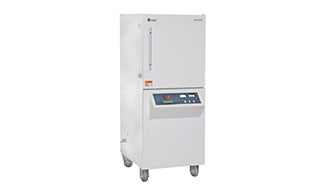Muffle furnace suppliers will share this article.
Although we call this equipment today a "muffle furnace" or "retort furnace", it does not represent the exact same scene, as it did in the early 20th century, a furnace is mainly heated by wood and coal. The muffle furnace is also called a retort furnace. The term "retort" is a container with gas-tight properties in which materials are placed and heated. This was very important in the past because heating would definitely be contaminated by combustion.
In the early 1950s, after the innovation of high-temperature electric heating elements and widespread electrification worldwide, most of the new muffle furnaces were quickly transformed into electric furnaces. The current electric furnaces ensure greater control over the uniformity of temperature levels, and there are no pollutants from burning gas. Today, the muffle furnace is usually a front box or tube furnace for high-temperature applications.
These furnaces are often used in laboratories as a means of developing abnormally high-temperature environments. These furnaces are used to test product characteristics at unusually high and precise temperature levels. These heating furnaces are also called retort furnaces.
The muffle furnace is a key component of high-temperature heating in the laboratory. It can heat samples at temperatures exceeding 1000°C (1832°F), and the risk of cross-contamination is very low. This is due to the mechanical layout of the furnace, which is different from gas burners, which are heated by high-purity metal elements. These parts are made of conductive metals that have high mechanical stability at high temperatures.
Parts of the muffle furnace
This iron-chromium-aluminum (FeCrAl) alloy maintains its physical integrity at elevated temperatures because the oxidized aluminum molecules migrate to the surface of the wire and form a protective patina.
It is a very hard material with a melting point of 1500°C (2730°F). It is highly ductile and can be wound into a customized shape and embedded in an insulator or furnace lining.
The solid-state relay uses an additional tempera to control the voltage of these filament heating elements.
The real controller is connected to a thermocouple embedded in the muffle furnace. This allows analysts to accurately monitor the thermal conditions of the heating chamber in real-time and adjust them through digital PID or optional precision controllers.
Refractory lining is used to ensure the influence of these heating elements and control.
The process conditions are accurate and the uniformity is good. High-strength alumina (AlO) or insulating refractory bricks made of high-grade silicon carbide (SiC) are used in the hearth of the muffle furnace. The hearth is a strong frame made of powder-coated steel or aluminum. Additional ceramic fiber insulation elements are used to protect the external upper structure of the muffle furnace and improve the heat radiation of the entire heating module.
Certain heat treatment processes can cause samples to produce potentially harmful exhaust gas, or emit steam and moisture. Muffler furnaces used to process samples and reduce the risk of moisture re-absorption may require integrated airflow control and ventilation elements such as fume hoods and exhaust ducts.

评论
发表评论